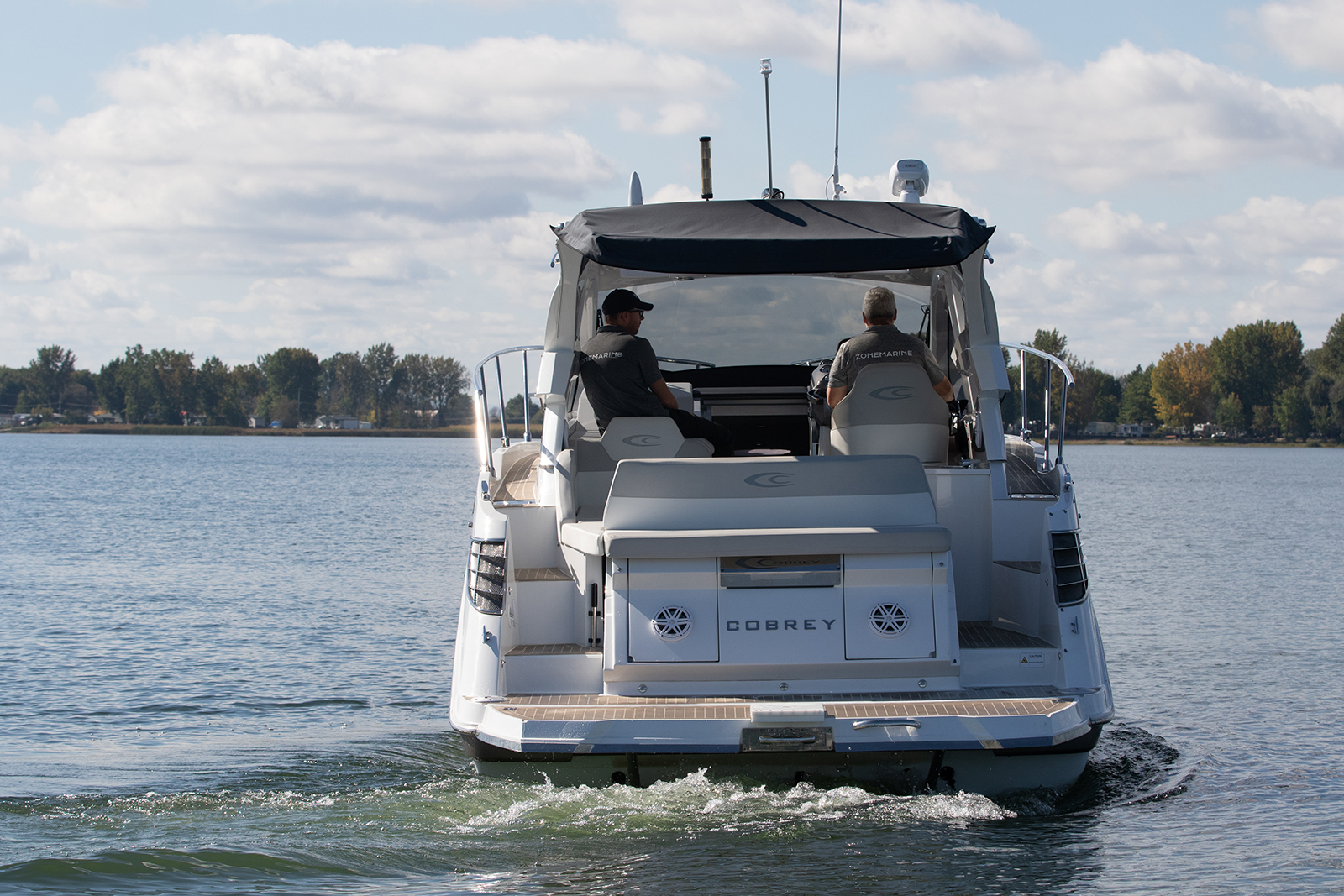By Dusty Miller
Sometimes when a large commercial ship is maneuvering in tight confines with a strong wind, the captain will back his vessel against a large pylon and pivot his ship around that point. This maneuver is highly effective and results in a successful landing. While your boat may not be 80-plus feet or loaded with 100 tons of cargo, the same technique can be applied when you’re in the tight confines of a marina.
The first thing to do is look at the water around your boat and check the direction of the wind. Don’t rely on the marine report – it only tells you about the wind in open water. Along the shore, in bays or marinas, the wind can be completely different. But in all likelihood, it will be gusty.
The natural thing to do is wait for the wind to pass momentarily. However, you’re better off starting when the wind is at its strongest, since there’s always an interval of time between the moment you engage your engines and the time the boat starts to turn. For example, if you start your move at the height of the gust, your vessel will be moving during the lull. If you start in the lull, the wind will probably pick up making it difficult to control your vessel.
Let’s say you want to back into a slip that opens to the west, there’s wind blowing from the south and your approach is from the north, into the wind. Since you need to back into the slip, you may have to turn 180 degrees in the channel of the marina. I find it’s easier to back into the wind at low speeds than it is to go forward. If you head in nose first, the wind will immediately catch the bow and you’ll have to maneuver quickly to compensate for the direction the wind is forcing you. While the stern is not pointed, there’s a little more time to react when your vessel falls off the wind. OK, let’s warp into the slip like one of those expert captains.
By using the downwind throttle (in this case the one to starboard) start backing in, but aim slightly upwind of the slip (the stronger the wind the more upwind your course).
As the stern enters the slip, stop the boat by putting the downwind throttle in neutral or quickly into forward then neutral. Let the downwind rub rail rest on the pylon. Where there is no pylon simply use the downwind finger dock, but you’ll definitely want to have a fender between your hull and the dock. Now you want to pivot the boat without moving forward or astern.
Put the upwind throttle in reverse (in this case the one to port) and the downwind throttle in forward. You don’t want the boat to go forward or reverse at this point, just simply pivot. You will have to feather the downwind throttle into neutral then back to forward to stop any forward movement. Keep in mind there’s always more force going forward than reverse, so be sure to keep the two forces balanced. When they are, you will see the bow swing up into the wind. If the wind is strong, you may have to use your throttles, but be gentle. Don’t use any more power than necessary to turn the bow. When your vessel is aligned with the slip, put both throttles in neutral to stop the swing, then reverse into the slip. In a very strong wind let your bow swing out of the slip to give you some “wiggle room” as you back in.
To get the hull off the piling, put the shifter (the one starboard in this case) into reverse. If the bow starts to move downwind, move the upwind throttle in reverse. Juggling the throttles this way will get you back in.
This will take some practice. But once you master this maneuver, it will prove to be a very valuable skill on those windy days.
Keyword : boat, boat handling, boat handling course, BOAT trailer tips, BOATING advice, BOATING DIY, BOATING Guru, BOATING hints, BOATING hitch types, boating lifestyle, Boating Lifestyle Magazine, BOATING Tech, Boating Tech Talk, boating tips, BOATING Touring, boatng, choosing a hitch, driving a boat, expert BOATING advice, Handle with Care Column, hitching a trailer, how to drive a boat, How to fix your boat, how to hitch a BOAT trailer, how to manage pivoting in a boat, How to tow a boat, PFD Life Jackets boating safety, pivot his ship around that point, pivoting, pivoting points, towing tips, what boat is best boat, boat handling, boat handling course, BOAT trailer tips, BOATING advice, BOATING DIY, BOATING Guru, BOATING hints, BOATING hitch types, boating lifestyle, Boating Lifestyle Magazine, BOATING Tech, Boating Tech Talk, boating tips, BOATING Touring, boatng, choosing a hitch, driving a boat, expert BOATING advice, Handle with Care Column, hitching a trailer, how to drive a boat, How to fix your boat, how to hitch a BOAT trailer, how to manage pivoting in a boat, How to tow a boat, PFD Life Jackets boating safety, pivot his ship around that point, pivoting, pivoting points, towing tips, what boat is best
